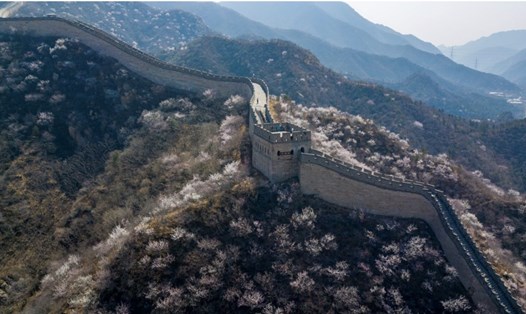These sections of Van Ly Truong Thanh were discovered in Tinh Nguyen district, Bach Ngan city, Tan Hoa Xa informed.
Based on characteristics such as the thickness of the clay layers, Chinese archaeologists initially concluded that these walls were built during the Qin Dynasty (221 BC - 207 BC).
Among the newly discovered sections of the citadel wall, the Van Ly Truong Thanh Yingu section has different soil colors of the clay layers in the east and west. This shows that this citadel wall was built at different times, according to archaeologist Du Baoze of the Tinh Nguyen Cultural Relic Protection Agency.
The wall of the east, looks like a mound, has a height of 5.2m, 4.5m wide and 11m long. When compared to the signaling towers built in the Ming Dynasty (1368-1644), Chinese archaeologists believe that the eastern part of Tuong Thanh showed the characteristics of the Great Wall of the Qin period, while the West seemed to have been repaired in the Ming Dynasty.
The sections of Yushugou, Longhuangshui and Huangtianqi of the Imperial Citadel have the same stone wall structure, showing that these sections were also built at the same time.
Most of the stone walls are built in areas of strategic importance, often between canyons or on terrain with natural defensive advantages.
This is in line with the characteristics of the Imperial Academy of the Imperial Academy, designed according to the terrain, allowing the builders to take advantage of the ability to defend nature while minimizing construction.
These sections of the Imperial Citadel were discovered in the 4th National Cultural Heritage Survey of China, which was launched in 2023 and will last until 2026.
The Ly Truong Thanh mosque, a World Heritage Site recognized by UNESCO, includes many sections of the citadel wall connected together, some sections of the citadel wall are over 2,000 years old.
The oldest walls were built under the Qin Shi Huang - the first emperor of the Qin Dynasty, who ordered the construction of the wall to protect the country from the northern tribes.








